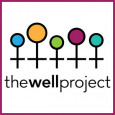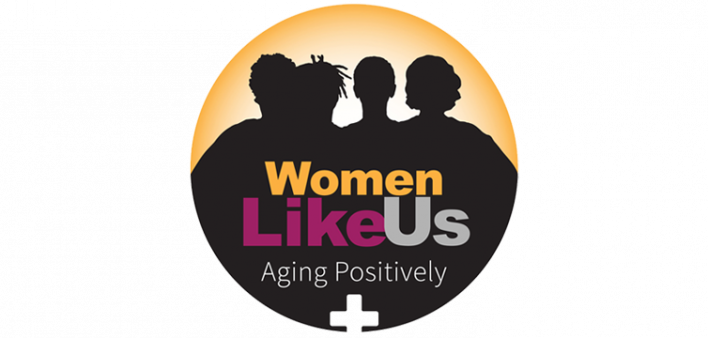This post originally appeared on The Well Project. Lea en español.
Table of Contents
- If you are age 40 or older, it is time to be screened for ...
- If you are an adult of any age, start now if you have not been screened for ...
- All people living with HIV ought to ensure you are up to date on vaccinations for ...
Even if you do not have symptoms or other warning signs, being on top of screenings can help catch health conditions early – and help you live your healthiest possible life.
Some health conditions are more common in women living with HIV across the gender spectrum as we grow older. It is important to be screened for those, sometimes at a younger age than recommended for people who are not living with HIV. For example, people living with HIV may develop osteoporosis (bone disease) or liver disease earlier than those who are not living with HIV. There are other screenings that all people who are aging should have.
Keeping up with vaccines is also critical to protecting our immune systems – for all people, and particularly for people living with chronic health conditions like HIV. It is important to state that living with HIV and taking HIV drugs does not mean your immune system is weak.
It is also important to note that women across the gender spectrum have a range of body parts that need care. Most cisgender women have a uterus, for example, while most transgender women have a prostate. Some of that diversity is reflected here in this chart. To safeguard your health, it is important to get screened based on your anatomy, regardless of gender identity or presentation.
You can use the suggestions in the charts and lists below to help guide conversations with your healthcare provider about what age-associated tests and vaccines make the most sense for you!
If you are age 40 or older, it is time to be screened for...
Condition | Who and When to Screen? | About How Often? |
| Bone Disease | People with HIV
| Every 1 to 10 years, depending on screening method and level of bone disease |
| Breast Cancer | Women/people assigned female at birth
|
|
| Cardiovascular/Heart Disease | People with HIV
| Talk to your provider about assessing your vulnerability |
| Colorectal Cancer | People with and without HIV
|
|
| Diabetes | Adults with and without HIV
| At least every 3 years |
| Menopause | Women living with HIV who have a uterus
|
|
| Neurocognitive Impairment | Screening guidelines vary for people living with HIV
| Discuss when and how to screen with your healthcare provider |
| Prostate Cancer | People with and without HIV who have a prostate
|
|
| Vision | Adults with and without HIV
| Talk to your provider about how often to screen |
If you are an adult of any age, start now if you have not been screened for ...
Anal cancer
- People living with HIV across the gender spectrum are more vulnerable to anal cancer than those without HIV, whether or not they engage in anal sex
- Screening with anal pap smear is important and can begin at age 25-30 – discuss schedule with your provider
Cervical cancer
- People with a cervix are recommended to be screened every 3-5 years beginning in their early 20s (if you are over 65, talk to your provider about whether screening is still needed)
- People living with HIV experience cervical cancer at a higher rate than those without HIV and may need to be screened more frequently
Depression
- Older adults living with HIV may be highly vulnerable to depression
- All adults can be screened at any routine exam
- Must be systems in place to correctly diagnose, treat, and follow up
Domestic/intimate partner violence
- Women living with HIV are far more likely to have experience with domestic/intimate partner violence than the general population of women
- Important for providers to screen people at any age during routine care
Drug or alcohol misuse
- Screening tool can be used at routine checkups to assess substance use safety
Hepatitis B and hepatitis C
- Recommended for people living with HIV
High blood pressure
- More common in people living with HIV than those without HIV
- Yearly checkup if blood pressure is normal (less than 120/80)
- Follow provider’s advice if your blood pressure reading is higher than normal
High cholesterol
- At least every 5 years
- HIV itself and some HIV medications can cause high cholesterol
Kidney disease
- Twice a year for people living with HIV
Liver disease
- Twice in first 6 months of HIV treatment or on new HIV drugs
- Once a year after being virally suppressed
Lung cancer
- If you are a smoker or have a history of smoking
- Talk to your provider about when to start screening
Obesity
- Increases vulnerability to numerous health conditions
- All adults can be screened at any routine exam
- Consultations on healthy eating and exercise are also important
Sexually transmitted infections (STIs)
- Important for women and others who are sexually active (may depend on number of partners or whether you have a new partner)
- Routine GYN exams can be the setting for screening
- If you have symptoms, get tested ASAP
All people living with HIV ought to ensure you are up to date on vaccinations for...
COVID-19
Flu (influenza)
Hepatitis A
Hepatitis B
Meningococcal (MenACWY)
Pneumococcal
Tdap (Tetanus, diphtheria, and whooping cough) or Td (tetanus, diphtheria)
Shingles
- US residents: Even if you were vaccinated for shingles in the past with a vaccine called Zostavax (zoster vaccine live), which is no longer in use in the US, you should still be vaccinated with Shingrix, the shingles vaccine currently available for use
MMR (measles, mumps, and rubella)
- If you were born in or later than 1957
Chickenpox
- If you were born in or later than 1980
RSV (respiratory syncytial virus)
- Talk with your provider about getting a single dose of RSV vaccine if you are age 60 or older
The Well Project is a non-profit organization whose mission is to change the course of the HIV/AIDS pandemic through a unique and comprehensive focus on women and girls across the gender spectrum. Visit their website, https://www.thewellproject.org/, to access fact sheets (English and Spanish), blogs, and advocacy tools, and to join a global community of women living with HIV.








Comments
Comments